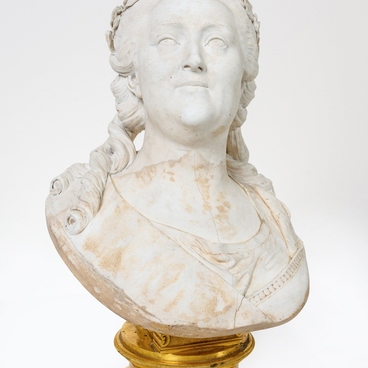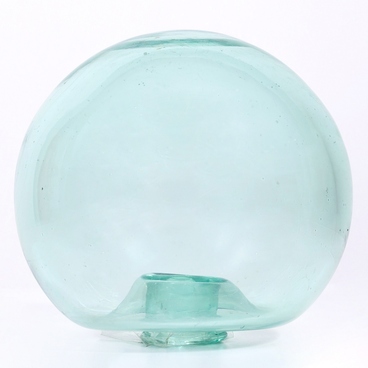The barrel-shaped stool entered the collection of the National Museum of the Republic of Mari El from the estate of Yurino, which belonged to the Sheremetev landowners. This exhibit was made in the 18th century in Holland. The material for it was earthenware — a dense fine-porous ceramic material, used for creating dishes, figurines, vases, and other interior items.
Earthenware production in Holland emerged at the turn of the 17th century. The city of Delft became the center of it. Potters there used clay with the addition of marlstone which contains a lot of calcium. Due to this composition, the products were thinner and firmer. To make the earthenware lighter, clay from the Belgian city of Tournai and the Rhine region in Germany was added to the local raw materials.
Delft ceramics were fired, coated with a glaze, and then painted. To do this, a blue cobalt-based dye was used. During work, it slightly spread over the surface and was absorbed into the base, which acquired a bluish tint. In the end, the dishes were covered with clear glaze: it gave the pattern a depth effect and made the surface smooth. The finished products resembled Chinese porcelain, which was very popular at that time. In the Netherlands, the Royal Delft plant is still in operation and manufactures products using old technologies.
The first ceramic barrel-shaped stools appeared in China more than a thousand years ago. First, they served as garden decorations, and then they became interior ones. It is likely that artisans were inspired by wooden or stone pedestals on which monks in Buddhist monasteries sat.
The main decoration of such stools has long been the imitation of several nails in the upper and lower parts. Chinese ceramists adopted this motif from masters who made drums: they pulled the skin on a wooden frame, and then fixed it with the same row of nails.
Ceramic stools were used not only for sitting, but also as footrests, small coffee tables, and bedside tables. In addition, they were used to hold flowers and books.
Earthenware production in Holland emerged at the turn of the 17th century. The city of Delft became the center of it. Potters there used clay with the addition of marlstone which contains a lot of calcium. Due to this composition, the products were thinner and firmer. To make the earthenware lighter, clay from the Belgian city of Tournai and the Rhine region in Germany was added to the local raw materials.
Delft ceramics were fired, coated with a glaze, and then painted. To do this, a blue cobalt-based dye was used. During work, it slightly spread over the surface and was absorbed into the base, which acquired a bluish tint. In the end, the dishes were covered with clear glaze: it gave the pattern a depth effect and made the surface smooth. The finished products resembled Chinese porcelain, which was very popular at that time. In the Netherlands, the Royal Delft plant is still in operation and manufactures products using old technologies.
The first ceramic barrel-shaped stools appeared in China more than a thousand years ago. First, they served as garden decorations, and then they became interior ones. It is likely that artisans were inspired by wooden or stone pedestals on which monks in Buddhist monasteries sat.
The main decoration of such stools has long been the imitation of several nails in the upper and lower parts. Chinese ceramists adopted this motif from masters who made drums: they pulled the skin on a wooden frame, and then fixed it with the same row of nails.
Ceramic stools were used not only for sitting, but also as footrests, small coffee tables, and bedside tables. In addition, they were used to hold flowers and books.



